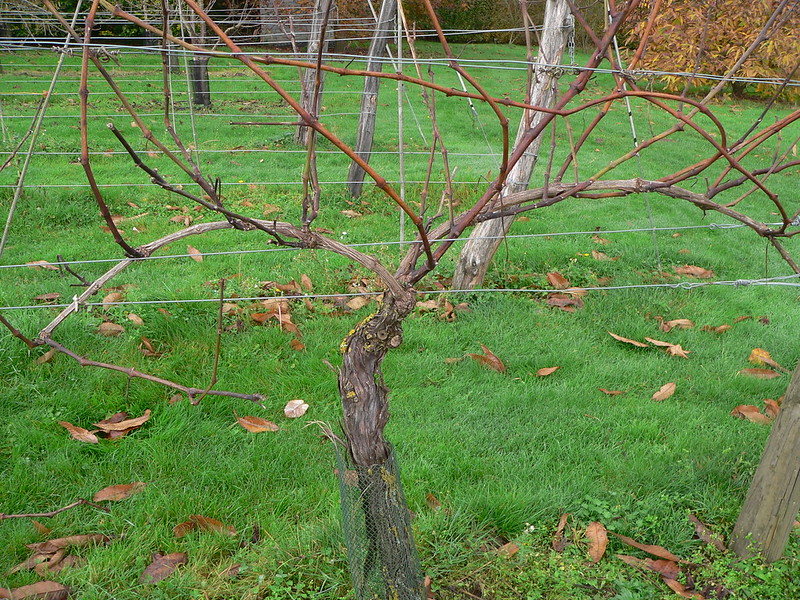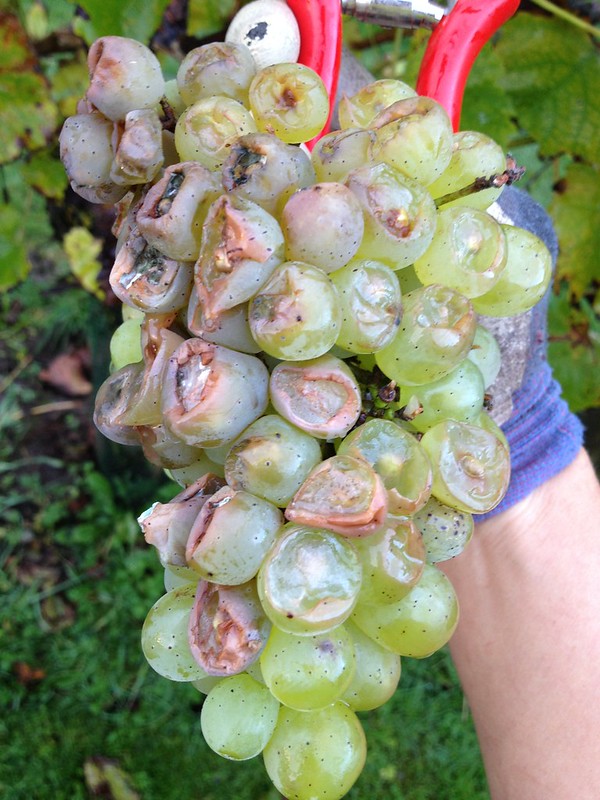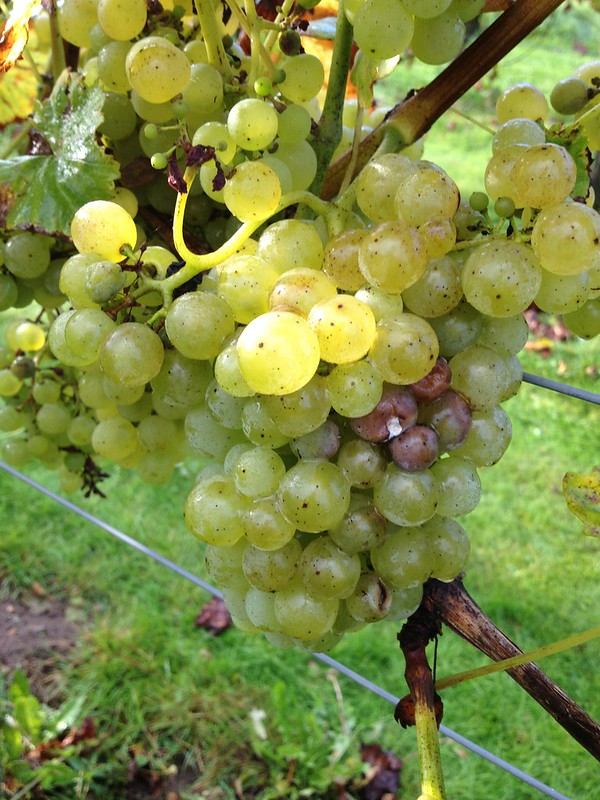- some general information about the plant and how it is grown;
- available and recommended cultivars, including any with an Award of Garden Merit (AGM);
- common pest and diseases and how to deal with them.
As this week we were planning a team grape picking day (to strip the vineyard ready to send the grapes to Plumpton College that makes RHS wine for us), we decided to have Vitis spp as our "crop of the week", and I worked on the cultivars section. The exercise was very interesting and among the most interesting things I learnt were:
- the grapes we cultivate for fruit, in the family Vitaceae, are grouped in two main species: Vitis vinifera (the so-called European vines, not very cold hardy and prone to pest and diseases given their long history in cultivation) and Vitis lambrusca (among others, the North American vines, hardier and stronger) and their interspecific hybrids;
- hybridisation with resistant US was prompted in the second half of the 19th century when a plague of pest phylloxera, Daktulosphaira vitifoliae, (accidentally introduced from the US*) decimated vineyards in Europe, that had no defence against them; incidentally V. lambrusca, is only resistant to the leaf-infesting form of the pest, not the root-affecting one, which damaged vineyards the worst; some European varieties that survived attacks from the pest, and remain ungrafted, are now considered a niche of connoisseur's "pre-phylloxera" wine grapes;
- a vineyard pest new to me: the Spotted Wing Drosophila (or SWD, binomial name Drosophila suzukii), unlike other fruit flies deposits eggs in healthy fresh fruit, and once the larvae hatch, they cause primary damage that facilitates access to other pests and diseases. More information on this pest is available from all agricultural extensions of US Universities, like Cornell Fruit or Michigan State University IPM and, specifically for the UK, by Horticultural Development Company (HDC) which specialises in near-market research for the industry;
- RHS Garden Wisley grows in excess of a 100 cultivars of Vitis, as part of a collection of outdoor and indoor grapes, plus a vineyard used to make RHS wine and stocked with over 750 plants of Vitis 'Phoenix' (for the bulk of the wine) and 'Orion' (for flavour) that have now been in place for some 10 years;
 |
| Fan borders: Vitis sp. trained as multiple cordon |
 |
| Vineyard: double Guyot |
- the vineyard plants are trained according to the double Guyot system: the leader is cut at about 15 cm from the ground, to 1-2 strong buds (in order to build up the root system). A new leader, from a strong shoot, is then trained until it reaches about 60 cm from the ground. From then on 3 strong shoots will be grown on: 2 will be trained and tied to the lowest horizontal wires of a post and wire system with 3 lines at about 90, 120 and 150 cm. These will form the cropping arms for the current year, which will send up vertical shoots to be tied to the higher wires. The 3rd shoot, is pruned back to 3 strong buds and its sideshoots will form the arms for future years;
- the vineyard is managed with weed control and regular pruning of the canopy in the summer, plus a feeding and spraying programme to control Botrytis, on instructions from our fruit specialist; it is pruned in December and tied down in early spring.
The grape picking day saw all the team mobilised, but we did not take much time to strip all the trees as this year has not been a good year for grapes at RHS Garden Wisley, especially not the 'Phoenix' cultivar, while 'Orion' fared better.
I grow 'Phoenix' at home, and my grapes seemed to fare rather well this year (in rather different conditions, including heavy chalky soil rather than sandy).
Is it a matter of soil conditions, of general growing conditions (for obvious reasons more pests and diseases concentrate where a wider range of plants are cultivated more intensively, of scale of production, of orchard management?
I am now intrigued to compare and understand further, so I will be following developments in the orchard really carefully, and look forward to working with my colleagues who specialise in grapes growing.
*an interesting article on the pest was published in the US magazine Popular Science Monthly in May 1874 (reproduced on Wikisource)



No comments:
Post a Comment